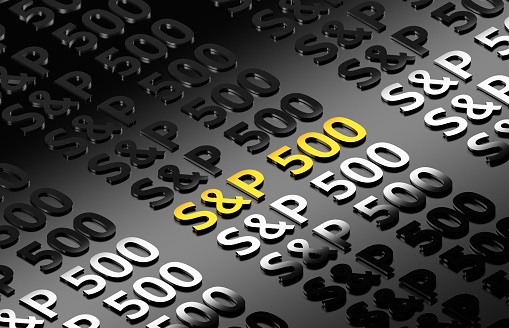Compared to recent days, there hasn’t been much movement in European and US equity markets thus far this Wednesday, reflecting a broader lack of conviction as market participants take a breather after some big recent moves in stocks, bond, commodity and FX markets over the past few sessions. As things stand, E-mini S&P 500 futures are flat on the session having swung between modest losses and gains, with index futures currently trading around the 4510 level, having broken above this level for the first time since early September yesterday. For reference, the S&P 500 closed 0.7% higher on Tuesday, boosted (according to market commentators) optimism about the ongoing strength of corporate earnings. On that note, Netflix earnings out last night were very good, with user metrics boosted (as expected) by the popularity of the sensational South Korean series “Squid Games” that has taken the world by storm. Tesla earnings will be released after today’s close. At current levels, the S&P 500 index positive news with regards to the implementation of President Biden’s economic agenda (positive as far as markets are concerned anyway but not positive if you are opposed to higher government spending and taxes!) has also been touted as boosting optimism. Reportedly the President is confident that agreement on the price tag of his social spending bill can be found somewhere in the $1.75-1.9T range. Progressive Democrat lawmakers have been refusing to allow for the passage of the $1T bipartisan infrastructure investment bill as they push to ensure that the separate social spending bill is sufficiently generous. If an agreement can be found between the mainstream Democrats and the progressives on the size of the social care package, that paves the way for both spending bills (infrastructure and social spending) to clear Congress via the process of budget reconciliation ahead of the next debt ceiling/government funding limits in December. This would clear one immediate risk for markets (i.e. the risk of an accidental US government default that was worrying markets a few weeks ago before the debt limit was temporarily pushed back) so would likely be positive for risk appetite. However, unlike in the recent past when fiscal spending was largely funded by debt (i.e. in response to the pandemic), it seems likely the coming round of spending will be funded by tax hikes to a much greater degree (to be paid for predominantly by the rich and corporations, so the Democrats say). Thus, the jury is still out as to whether such measures will be a long-term net positive for the US economy, hence why the market reaction to the news of a full deal being made is likely to be much less exuberant.
Back to markets, European equity markets are also keeping one eye earnings and the Stoxx 600 currently trades with modest gains of about 0.1% on the session as it takes its cue from the calmer waters of global markets. The US 10-year did manage to hit a fresh five month high at 1.65% overnight but has since pared back some of these gains to trade around 1.63%, though the move higher in long-term US yields was ultimately enough to push USDJPY to fresh four-year highs at 114.50 at one point. Longer-term US yields might be at highs, but the pullback in shorter-term US yields has continued for a second day, with US 2-year yields still subdued and trading to the south of the 0.40% level having been as high as 0.45% on Monday. The pullback comes despite market participants continuing to price in a more aggressive hiking cycle from the Fed; the money market implied probability of there having been at least one 25bps by the June 2022 meeting is now nearly at 50%, up from under 10% just one month ago. Some analysts have suggested that the Fed is very unlikely to start hiking interest rates before it has finished unwinding net QE purchases, which is not expected until somewhere around next June/July, so money market pricing might be getting a bit aggressive. Still, it keeps upside risks for short-end US yields alive and if short-end yields can start moving higher again, this could be a positive catalyst for the US dollar (though doesn’t seem to be the case today. In terms of commodities, oil prices have slipped back a little with WTI currently close to $81.50 per barrel, which leaves the benchmark about 2.5% below Monday highs at just under $84.00. Traders had warned there was a risk of some profit taking, with oil looking overbought on a few technical metrics, and think a retracement all the way back to or even under $80.00 is possible. Most remain bullish from a fundamental standpoint, however, as global energy markets remain tight as the northern hemisphere heads into winter.
Looking at the G10 currencies this morning; sterling is a little weaker, with GBPUSD slipping back under 1.3800 to trade around 1.3750 and is the G10 underperformer as markets expectations for a BoE rate hike as soon as the November meeting take a knock in wake of a slightly weaker than expected UK September CPI report. For reference, the annual rate of CPI dropped to 3.1% from 3.2% in August. But economists note that base effects as a result of the ending of the Eat Out to Help Out scheme at the end of August last year artificially suppressed the inflation readings and as this impact normalises and the gas price cap is lifted in October, CPI is expected to rise sharply again into the end of the year and into 2022. Thus, the latest CPI report is unlikely to be judged as materially altering the UK’s inflation outlook, which (as indicated by Governor Bailey over the weekend), remains concerning – recall that while the Governor views the spike in inflation being witnessed at the moment as ultimately transitory, he worries that inflation expectations might be deanchored and thus policy must respond accordingly to prevent this (as this could trigger a self-fulfilling inflationary spiral). GBP weakness seems to be the main reason why the DXY is trading 0.1% higher on the session, given that USD is flat versus the likes of EUR, CHF, JPY and CAD. EUR has shrugged off the news of the resignation of influential hawkish Bundesbank President Weidmann from the ECB (and his role as head of the e Bundesbank) and CAD awaits the release of Canada’s September CPI report. NZD and AUD are a little firmer on the session, continuing their recent run of gains as traders look to challenge key levels in the form of 0.7200 for NZDUSD and 0.7500 for AUDUSD.
Onto the day ahead; Canadian September CPI numbers at 1330BST will be worth a watch ahead of the release of official weekly US crude oil inventories data. Otherwise, the focus will be on further updates from FOMC members, including speeches from Chicago Fed President Evans, FOMC member Quarles and the release of the quarterly Beige Book – the latter may highlight ongoing economic themes such as supply chain disruptions and labour shortages that are currently plaguing the US economy.




